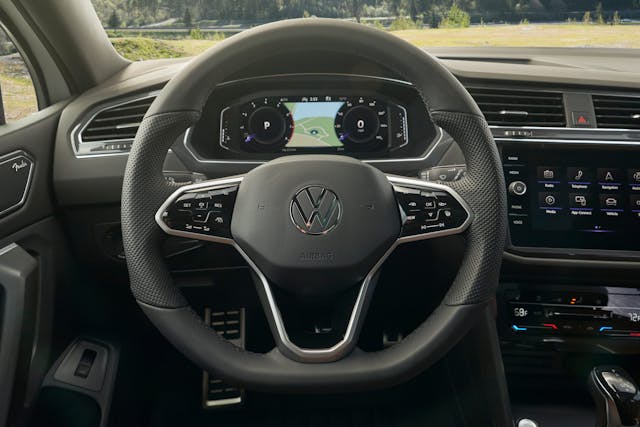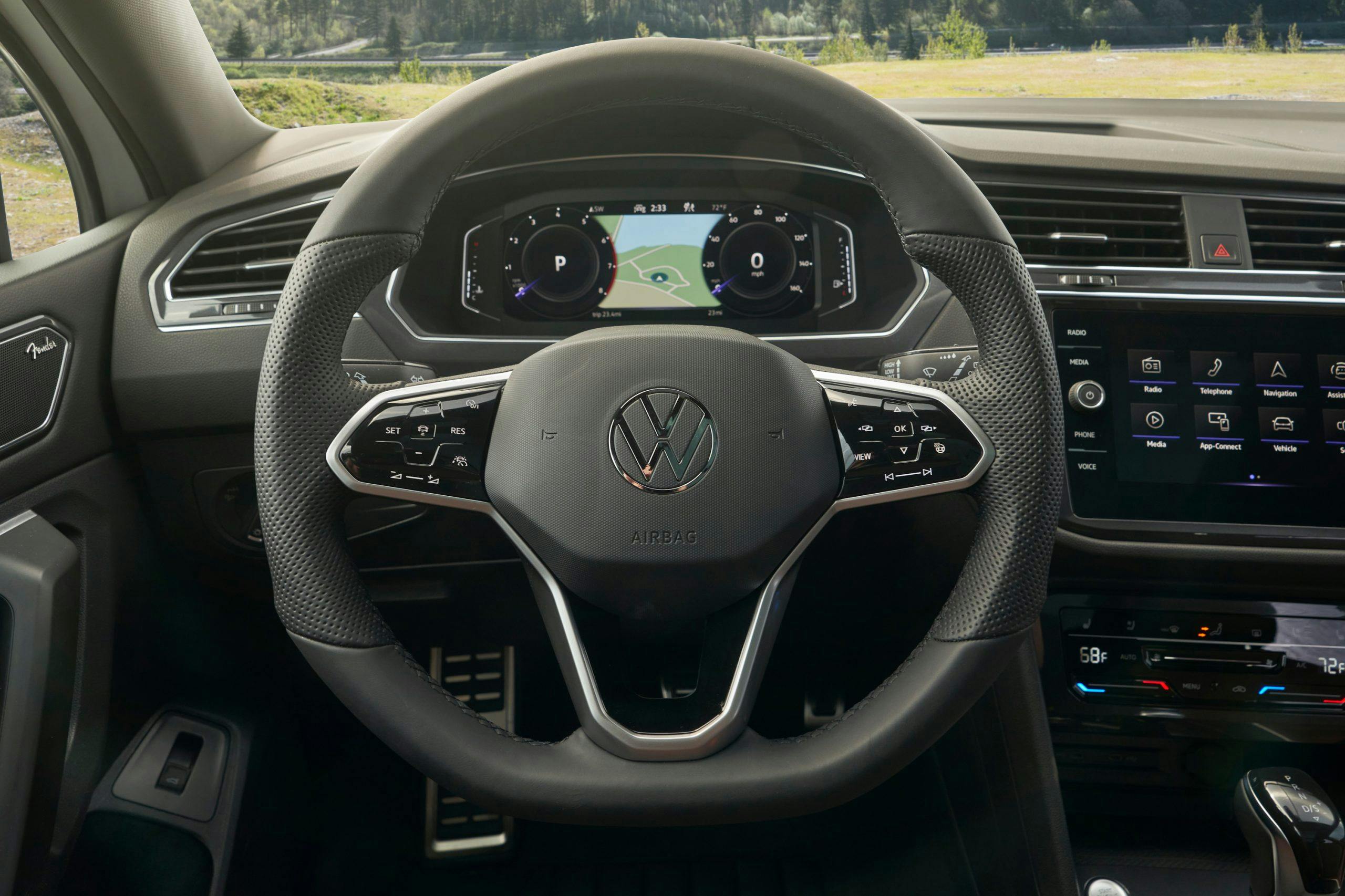Media | Articles
Volkswagen relents, agrees to put buttons back on its steering wheels
Turns out, the Venn diagram of “technological advancements” and “things people want on their cars” is not a single circle. In a recent LinkedIn post, Volkswagen passenger cars CEO Thomas Schäfer announced that the brand will bring back push buttons on its steering wheels, replacing the controversial touch buttons currently found on models like the Golf GTI, Golf R and the ID.4 EV.
“We are sharpening our portfolio and our design, plus creating a new simplicity in operating our vehicles,” said Schäfer’s post. “For example, we are bringing back the push-button steering wheel! That’s what customers want from VW.”
(It’s not lost on us that “new simplicity” here is actually a solution that’s been around for decades. Let’s all just be happy that buttons took the win today.)

This is a good thing for future VW customers. Few things are as frustrating as accidentally muting your tunes while knifing through switchbacks or disengaging cruise control while lazily reaching to roll down the window.
In fact, we’re hoping VW considers taking it a step further, returning other functions in its central infotainment system to buttons, knobs, and switches as well. In a recent test-drive of the ID.4 AWD Pro S, we found the centrally-mounted touch controls for the volume just as irritating on the move. Given that other models, like the über popular Tiguan still have volume knobs, is it too much to ask for a more conservative blend of screens and switches?
Marketplace
Buy and sell classics with confidence
The mention of “simplicity in operating” has us wondering if VW’s U.X. (user experience) engineers are re-thinking some of of the menu layouts as well. Do we really need to navigate a vague animated diagram of our car on the road just to get to a toggle menu to turn off lane-keep assist? If the recent spy shots of a face-lifted Golf mule running around with an even larger screen are any indication, we’re not anticipating wholesale rewrite of VW interior controls.
Volkswagen spokesperson Mark Gillies confirmed to Hagerty that the first U.S.-market vehicle that we’d see these changes on will likely be seen in 2024. That timeframe may mean we’ll see it first on the Golf, but it may also be something that first bows on VW’s new Taos subcompact crossover. Odds that it’s a new Tiguan are slim; that car, whose second generation debuted in 2016, is getting long in the tooth. News of a new Tiguan may drop next year, as that’s in line with VW’s current product cycles, which usually turn over every seven years or so.

Volkswagen has a lot riding on forthcoming models such as the updated ID.4 and the lovable ID.Buzz electric van. Getting the interior interfaces right could go a long way in helping the brand stay competitive in the meat of the EV market. Simplifying the steering wheel is certainly a step in the right direction.













I hate touch screens in cars and will not buy a car with one. Not only are they annoying, but distracting, and whoever thought it a good idea to direct a drivers attention away from the serious business of driving to a “screen” so he can change the radio station, or? Where was/is the NTSA on this one? How are these less dangerous than texting while driving? I will enjoy my older analog cars thank you, and leave the computers and monitors in my office where they belong.
Here here. I agree with a certain amount of touch screen technology in cars, however when it comes to climate control, volume control, please LEAVE US WITH KNOBS! BMW 5 series (2024 model) unfortunately has crossed over to the stupid touch screen side, therefore after 16 years (and 5 5series) later, I will be looking elsewhere.